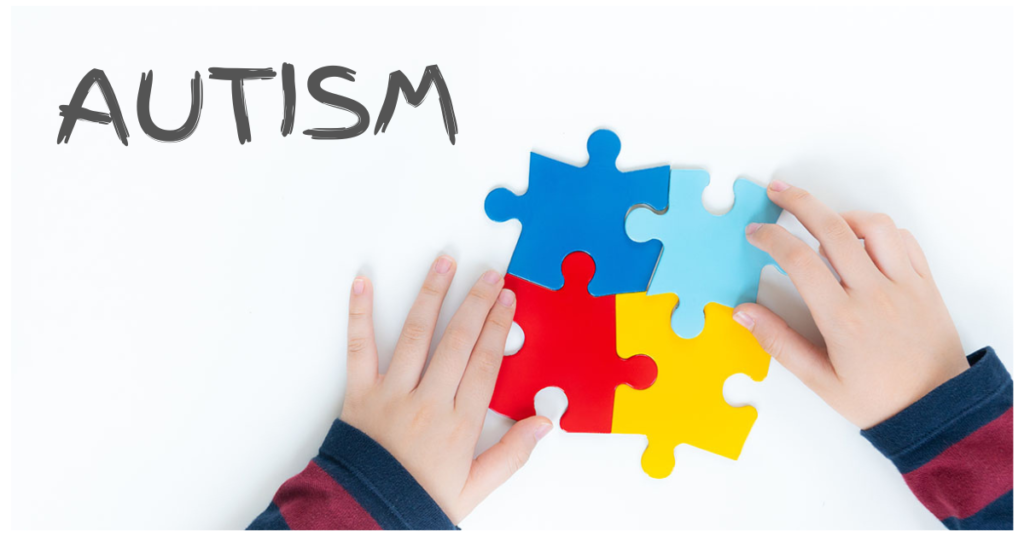Autism: Effective Strategies for Supporting
Autism: Effective Strategies for Supporting
Autism, also known as Autism Spectrum Disorder (ASD), is not a disease or illness but rather a condition that is characterized by differences in social skills, communication, and behavior. This means that people with Autism have unique ways of communicating and interacting socially, and their behavior may be repetitive or highly focused. The term ‘restricted, repetitive patterns of behavior’ is often used to describe this. Additionally, people with Autism tend to experience differences in their senses, which can affect the way they feel and respond to their surroundings.
The term ‘spectrum’ is used because there is a wide range of characteristics, skills, and abilities that different people with Autism have. No two people are affected by Autism in the same way, and every person has different support needs. Although the core characteristics of Autism can cause challenges, it’s important to recognize that they can also result in unique skills and capabilities.
While Autism is a lifelong condition, with appropriate and tailored support, individuals with Autism can make significant progress and lead fulfilling lives. Therefore, individuals with Autism must have access to special services to understand their needs and be experienced in developing their skills and strengths.
Signs & Symptoms of Autism
- Communication: Disturbances in communication are commonly classified into two groups and have long been recognized as a central characteristic of autism:
- Comprehending non-verbal cues such as body language, facial expressions, and verbal language from others is a crucial aspect of receptive communication. Some or all of these components of receptive communication may be difficult for people with autism.
- The way we communicate our needs, desires, ideas, and feelings to other people is referred to as expressive communication. While some autistic individuals have severe language development problems, others may speak in great depth about particular subjects and have an exceptionally large vocabulary. While some autistic individuals only speak very little or never speak at all, others use talking as their primary form of self-expression.
2. Social Interaction: Communication is social by nature, involving both a sender and a recipient of information. There are various subtleties and unstated norms in social situations that influence how we interact with others and vary depending on the circumstances and individuals involved. Individuals diagnosed with autism spectrum disorder (ASD) frequently struggle to identify and interpret social cues and may lack the innate ability to modify their behavior in different social settings.
3. Repetitive Actions Repetitive behaviors can include movements, sounds, routines, and rituals, and may be obvious or subtle depending on the person.
- Movements: Repetitive physical behavior can take the form of an action, like flicking a light switch or a body movement, such as hand flapping or pacing.
- Vocalization: Repetitive vocal behavior can include repeating sounds, laughing, and echolalia. Echolalia is when an individual repeats phrases, words, or parts of words that they have heard. It can serve different purposes, such as responding to a question, taking turns in a conversation, getting someone’s attention, requesting something, or coping in the moment.
- Routines: Routines are a regular aspect of daily life, such as preparing for bed or brushing teeth, and most of us have specific rituals for pleasure, such as having a special dinner once a week. However, routines hold even greater significance for individuals with Autism, as they provide a sense of structure and predictability in a world that can often feel chaotic, constantly changing, and overstimulating.
4. Interests: Individuals with Autism often have intense and highly focused interests and passions, which they may develop from a young age. It is not uncommon for some individuals with Autism to become attached to objects or parts of objects, and collecting things may also be a common interest. These interests can be lifelong or change over time. Having a strong and focused interest can be a great asset, especially if it is supported and can be directed towards meeting new people, education, or building a career. However, when combined with other characteristics of Autism, it can also pose some challenges, such as limiting the individual’s involvement in other activities or affecting their social skills.
5. Sensory Processing: The nervous system gathers, understands, organizes, and uses information from our senses (e.g. sight, hearing, touch, taste, smell, balance, and body awareness), and turns it into a response.
It is now widely accepted that people with Autism process the information provided by their senses differently from others. These sensory differences may result in unusual or unexpected behavioral responses and can be affected by a person’s sensory sensitivities and preferences, environment, overall health, and stress levels at any given time.
6. Thinking & Learning:
- Theory of Mind – When we interact with others or think about them, we tend to predict their thoughts and emotions. This helps us to understand their intentions and respond accordingly. Recent studies have shown that individuals with Autism may experience a delay in developing this understanding. They may find it more challenging to understand other people’s perspectives and, as a result, misinterpret their intentions or respond in an unexpected manner during social interactions.
- Central Coherence- Individuals who experience difficulties with central coherence may find it challenging to comprehend the implicit or unexpressed norms in social scenarios, also known as the ‘Hidden Curriculum.’ Some individuals with Autism may have central coherence issues that make it difficult for them to navigate social situations. However, having a weaker central coherence could result in paying close attention to detail, which is an area of excellence for many people with Autism.
- Functioning Skills- Many individuals with Autism experience difficulties with Executive Functioning, which can lead to challenges in skills such as reasoning, planning, organization, task completion, and emotional regulation. Additionally, some individuals may find it challenging to focus on more than one train of thought or multitask. These struggles in Executive Functioning can make seemingly simple activities such as cleaning, homework, or taking out the trash very complicated. However, there are several strategies available that can help individuals overcome these challenges.

What Causes Autism?
Autism is strongly genetic:
- Comparatively speaking to the general population, families with one autistic child are more likely to have a second autistic child. It is expected that approximately 1 in 5 people will have another impacted child. There is also a tendency for family members of autistic individuals to exhibit more severe symptoms of the disorder.
- Twin research indicates that there is a very high likelihood that the other identical (monozygotic) twin will also have autism (77% in one big study) when one twin is affected by the disorder. It’s far less likely with fraternal (dizygotic) twins because their genetic makeups differ from one another.
Older parents may be a factor:
- There is mounting evidence that mothers and men who are older (over 45) have a higher likelihood of having an autistic kid. Children with developmental and other issues are generally more likely to have older parents.
- Pregnancy and delivery problems are more common in older moms, even though the cause is most likely hereditary.
Pregnancy and birth:
- The early stages of infancy seem to be critical times when brain development might be impacted. It has been discovered that a mother’s bacterial or viral infections during pregnancy may somewhat raise the risk of autism, but this is a very small correlation.
- There is little evidence to support the theories that a mother’s folic acid shortage, gestational diabetes, or prenatal usage of specific antidepressants are linked to autism in her offspring.
Diagnosis of Autism
Receiving a definitive diagnosis of autism can be challenging. Your physician will concentrate on development and behavior.
Diagnosing children typically involves two phases.
- Your doctor can determine whether your child is on track with fundamental skills like learning, speaking, acting out, and moving by having them undergo a developmental screening. According to experts, children should have screenings for these developmental delays done at regular checkups at nine, eighteen, and twenty-four or thirty months of age. Every child is routinely examined, with a focus on autism, at their 18-month and 24-month visits.
- Your child will require a more thorough review if these screens reveal any indications of a problem. Tests for hearing, vision, and genetics may be part of this. Your physician may choose to consult with a specialist in autism disorder. Your doctor might want to bring in someone who specializes in autism disorders, like a developmental pediatrician or a child psychologist.
See your doctor if you exhibit symptoms but were not given an autism diagnosis when you were younger.
There are several actions you may do to feel your best if you recently received an autism diagnosis:
- Spend as much time as necessary comprehending the diagnosis. You may experience a spectrum of feelings. Recognize that your doctor is a resource for assistance. A diagnosis does not have to stop you from living a normal life.
- Conduct research. You may educate yourself on autism by reading articles like this one. You only need to consult a few reliable sources to begin learning about your diagnosis, even though there is a wealth of material available.
Living with Autism
You will always have autism if you have it. However, a child with autism might develop significantly differently if they receive treatment early enough. Inform your physician as soon as you suspect your child is exhibiting signs of an ASD.
Therapies for autism
A person’s solution may not be a solution for another. Your physician should customize your care or that of your child. The primary categories of care are:
- Behavioral: Assists an individual in comprehending the origins and consequences of their actions, enabling them to modify undesired habits.
- Developmental: Occupational therapy focuses on living skills like eating and dressing, physical therapy enhances motor function, and speech therapy helps patients communicate more effectively.
- Psychological: Cognitive-behavioral therapy (CBT) is one type of treatment that can help patients manage their anxiety, sadness, or other mental health issues in addition to autism.
- Educational: Modifies teaching methods to accommodate the requirements of individuals with autism.
- Social-relational: Concentrates on fostering emotional connections and enhancing social abilities.
- Medications: Strive to reduce the attention issues and hyperactivity that are signs of ASD.
Individualized Support is the Key
It’s important to understand that everyone is unique, which means that a strategy that may work for one person may not necessarily work the same way for another. This is why we refer to it as ‘Individualized Support’. When considering strategies, it is important to keep in mind that many individuals with autism have their own unique needs and preferences.
Visual Thinkers: Visual information has a longer-lasting and more tangible effect compared to information that we hear and speak.
Literal thinkers: Literal refers to the surface meaning of what is said. When expectations or instructions are made clear, people with autism typically respond well to them. Figurative language is used to convey deeper meanings through hidden or supplementary meanings. Individuals with autism spectrum disorder may struggle with idiom comprehension, “reading between the lines,” or identifying the “hidden rules” in social settings.
Understanding, sensitivity, and patience are necessary while providing support to a loved one with autism. You may support your loved one in thriving and realizing their full potential by educating yourself on the disease, communicating clearly, setting up a structured environment, employing positive reinforcement, promoting sensory integration, and getting expert help.











